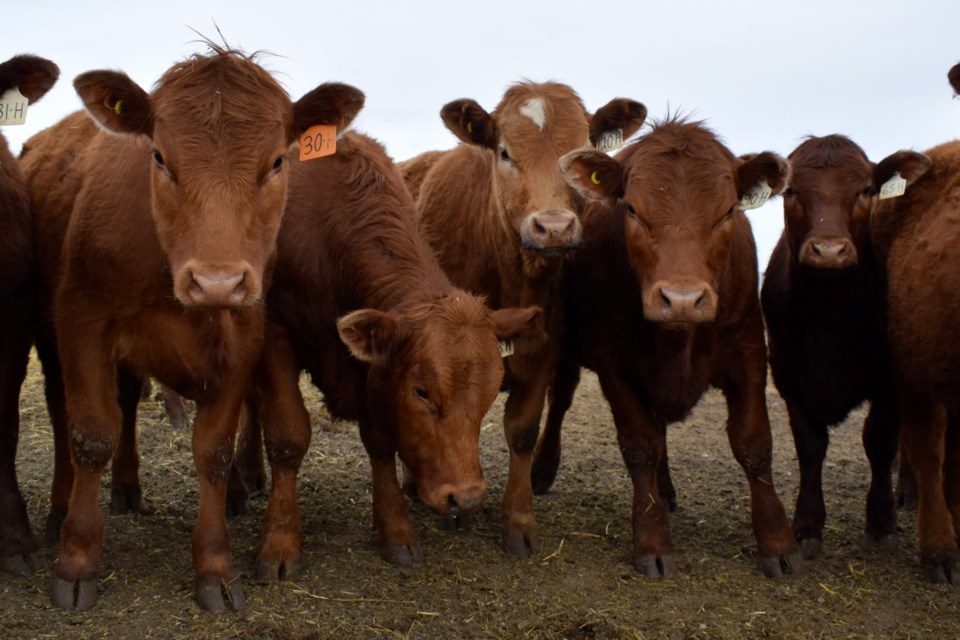WESTERN PRODUCER —Former Agriculture Canada researcher calls net zero an unrealistic target to set for industry, including the livestock sector
Climate neutral, not net zero, should be the goal set in the ruminant livestock sector, says an expert in ruminant science.
“There are very ambitious targets being set by industries. A lot of the wholesalers and retailers are all coming out every day saying they’re going to be net zero,” said Karen Beauchemin, honorary research affiliate with Agriculture Canada.
“We are, as producers, supplying milk and meat to Walmart and McDonald’s and JBS, and all these companies who have said they’re going to be net zero. This is not going away. The government and industry (have) set very lofty targets and who’s going to have to deliver? It’s producers.
“I don’t see with where we are right now that we’re anywhere close to net zero in the dairy or the beef industry.”
Beauchemin recently retired after a 35-year career as a research scientist with the federal agriculture department and spoke at the Animal Nutrition Conference of Canada event in Saskatoon.
Climate neutrality in animal production would not contribute to any further increase in global temperature, which she said distinguishes it from other sectors.
“You’ll hear for manufacturing (that) net zero, climate neutral are interchangeable because it’s all about the use of fossil fuels,” said Beauchemin.
“I don’t think with the technology we have today we can be net zero. We can certainly be climate neutral and by climate neutral it’s not about greenhouse gas, per se. It’s about the effect of the greenhouse gas on the climate.
“I think at this point it has to be at an industry level. But we need to figure out as a feed industry and beef associations, how are we going to help farmers? Because I don’t feel like it should be up to the farmer to figure it out.”
Methane gas from ruminants makes up an estimated 40 percent of greenhouse gas emissions from agriculture. Enteric methane is one byproduct of the digestive process and is expelled by ruminants primarily through burping.
“So, if we can reduce enteric methane from ruminants, we can reduce the warming effect that ruminant production has on the climate,” she said.
“We might not be net zero, but we could be climate neutral. We could reduce methane emissions and we can increase carbon sequestration. So, we have more sequestered and less emissions. We might be able to get to climate neutral, and that’s different than net zero emissions. There’s always going to be some emissions that we can’t get rid of.”
The question is how to substantially reduce methane emissions.
“We have some technologies that we know can reduce emissions by 10 to 15 percent: improved feed efficiency, better genetics, better herd management and better crop management,” Beauchemin said.
“All of those, when added together, improve the efficiency of production; getting more meat, more milk out of the system with fewer greenhouse gas emissions. But those reductions are relatively small in Canada because we’re already so highly efficient.”
Because methane makes up the largest output of greenhouse gases for ruminants, Beauchemin’s research looks at feed additives and diet formulations, as well as new ways to reduce enteric methane emissions.
“We have several feed additives, for example, that we know when fed to animals reduces emissions by 30, 40, 50 and even more percent. Those products are not registered yet in Canada, but they are coming down the pipeline,” she said.
One of those products is a feed additive called 3-Nitrooxypropanol (3NOP).
“It’s a synthesized product that when you put it in the diet of a ruminant, it blocks the biochemical synthesis of methane in the rumen. It shifts the way the feed is digested such that methane is not produced ….
“It is highly effective. It’s somewhat diet and dose dependent. The reduction in methane is somewhere between 20 and 80 percent depending on the diet and the type of animal,” she said.
Another promising product is a red seaweed (Asparagopsis taxiformis) supplement that reduces enteric methane by 80 to 90 percent in beef steers.
It’s artificially produced, expensive and not at a commercial scale, Beauchemin said. Researchers are focused on determining how and when it works, as well as how to produce it safely, sustainably and cheaply.
There are also diet formulations that farmers can implement now.
“They also reduce methane emission, but not in that 30 to 40 percent range. It’s by 10, 15, 20 percent.”
Beauchemin said the best strategy depends on the farm, and improved forage quality and digestibility are key to reducing methane emissions.
She advises cutting hay earlier and managing cattle on pasture to avoid overgrazing.
Another strategy is increasing the use of perennial legumes such as alfalfa, sainfoin or legume grass mixes, which is “hugely important because there’s less methane when an animal consumes a legume than when an animal eats grass.
“If you’re feeding a legume harvested at an early stage of maturity compared to a grass at a very mature stage of maturity, it’s a huge difference,” she said.
Herd management, particularly with cow-calf producers, is also essential to lowering enteric methane.
“You have to cull all the inefficiencies in your system. You need to figure out where are you feeding feed, where you’re not getting a benefit from that. That’s pretty harsh, but you need to think about getting rid of animals who are not delivering a calf.
“If you’re carrying a cow that does not deliver a weaned calf, you fed that cow for 365 days a year, you’ve got a lot of methane going up into the atmosphere, and you’ve got no product,” she said.




